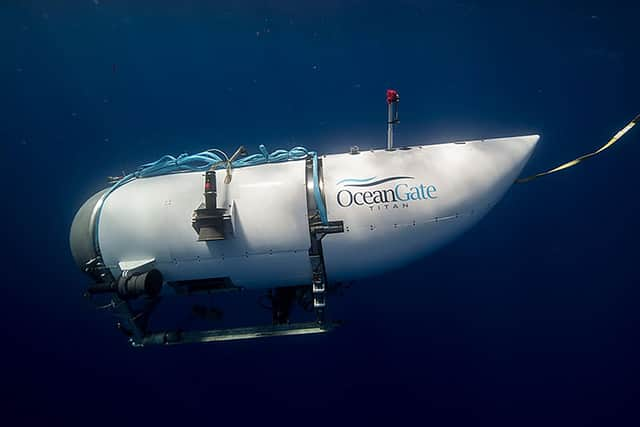Belfast-based underwater robot expert on Titan tragedy: 'From the time they lost contact their chances were slim - they probably didn't see it coming'
and live on Freeview channel 276
Michael Brannigan, director of the firm Survey Genix which operates ROVs (remotely operated vehicles) used for repairing undersea structures, said he was essentially agreeing with the view put forward by ocean adventurer and movie director James Cameron, who described the past six days of media coverage as a hopeless "charade".
Mr Cameron, the director of the movie Titanic (among other massive blockbusters), has personally visited the wreck dozens of times.
Advertisement
Hide AdAdvertisement
Hide AdHe said that as soon as he heard the news on Sunday that Titan was out-of-reach of surface comms, “I felt in my bones what had happened", and that talk of a possible rescue had been in vain.
“For the sub’s electronics to fail and its communication system to fail, and its tracking transponder to fail simultaneously – sub’s gone," he told the BBC on Friday.
“I knew that sub was sitting exactly underneath its last known depth and position. That’s exactly where they found it.
"It felt like a prolonged and nightmarish charade where people are running around talking about banging noises and talking about oxygen and all this other stuff.
Advertisement
Hide AdAdvertisement
Hide Ad“I immediately got on the phone to some of my contacts in the deep submersible community. Within about an hour I had the following facts. They were on descent. They were at 3,500 metres, heading for the bottom at 3,800 metres.


“We now have another wreck that is based on unfortunately the same principles of not heeding warnings.”
Mr Brannigan said: "As soon as the news came out, the prospect of survival I probably wouldn't have put very high, based on depth and everything else.
"At that depth, any issues that may arise potentially would be catastrophic."
Advertisement
Hide AdAdvertisement
Hide AdAsked about Mr Cameron's view, Mr Brannigan (originally from South Africa but who has lived in Ulster for about 14 years) said: "Yeah, I'd agree. Even if the vessel didn't implode, as what they expect now, to try to recover a vessel at that depth [within] three days is not really a good chance at all.
"So probably from the beginning their chances were relatively slim, and everybody was just hoping for the best outcome – that there was a system in place so that when something does fail electronically or navigation wise the vessel would automatically return to the surface.
"Some vessels do have that capability, but from what I've been reading that vessel would be extremely basic."
At a depth of about 12,500ft, where the Titanic lies, ocean pressure would be over 5,500 pounds per square inch.
Advertisement
Hide AdAdvertisement
Hide Ad"I'd probably say they didn't even see it coming," said Mr Brannigan.
" They lost communications somewhere near the bottom. It's all hypothetical but if something did just implode instantly I don't think anybody would've known anything.
"At those pressures I'd probably guess it'd be relatively instant. A compromise in the hull would just see it crack and instantaneously implode."
He added that he would have imagined "instead of having a little toy going down and having a look, they'd have had a bit better systems in place".
Advertisement
Hide AdAdvertisement
Hide AdThe BBC quotes former US nuclear submarine officer Dave Corley as saying that when a submarine hull collapses, it moves inward at about 1,500mph, and that the time required for complete collapse is about one millisecond (with a human brain taking about 25 milliseconds to react to an event).
It also quoted him as saying that the air inside a sub has a fairly high concentration of hydrocarbon vapours, and that this ignites on implosion in such a way that, as the BBC report puts it, "human bodies incinerate and are turned to ash and dust instantly".
It is not clear if a similar dynamic would apply to a small submersible, instead of a full-sized submarine.
There has been a great deal of criticism of the company which owned the Titan, OceanGate, since the fatal accident.
Advertisement
Hide AdAdvertisement
Hide AdMr Cameron added: "In the 21st Century, there shouldn't be any risks.
"We've managed to make it through 60 years, from 1960 until today, 63 years without a fatality. So one of the saddest aspects of this is how preventable it really was."